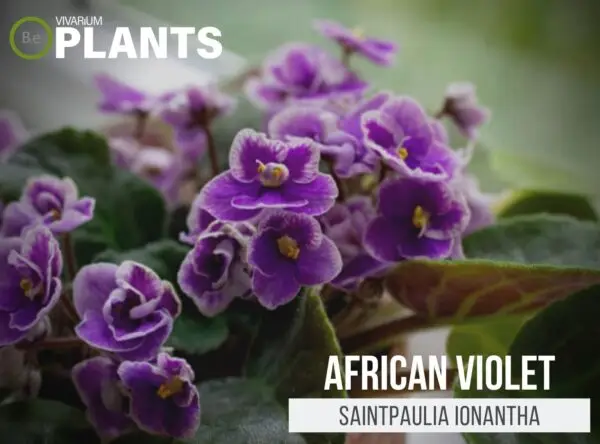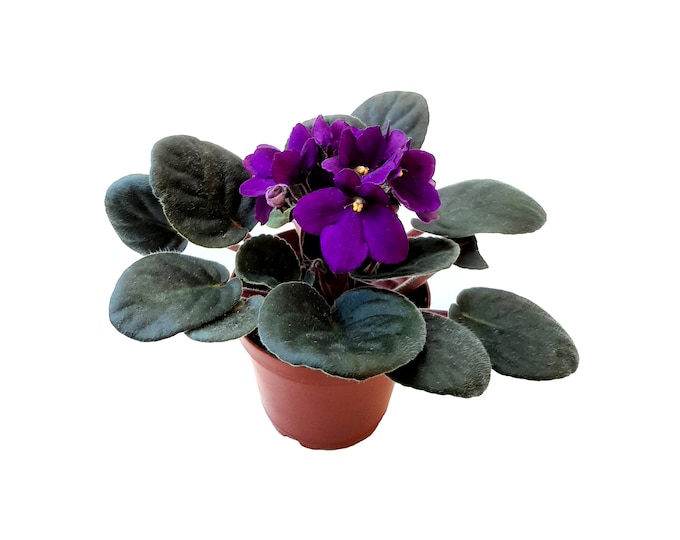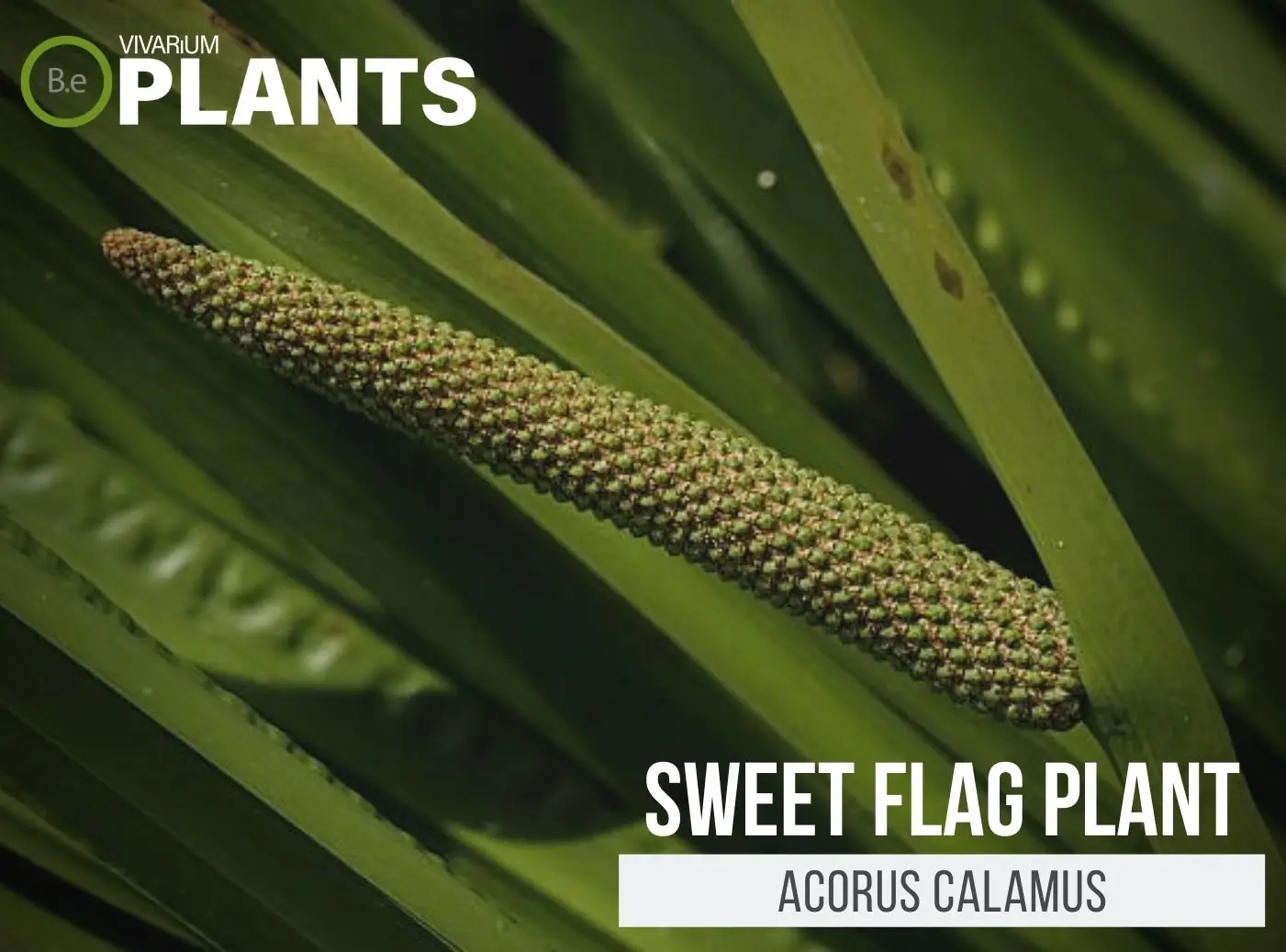Saintpaulia ionantha (African Violet) is a beautiful, low-maintenance houseplant popular among many pond plant keepers.
This tropical perennial herb is part of the Gesneriaceae family, with a long history of being cultivated and bred for its diverse range of flower colors and patterns.
Though it is native to the highlands of tropical Eastern Africa, it is found in many homes and gardens around the world.
Aside from its beauty and resilience, the African Violet is extremely easy to care for.
| Quick Stats: | |
|---|---|
| Scientific Name | Saintpaulia ionantha |
| Common Name | African Violet, Royal Violets, Saintpaulia |
| Family Name | Gesneriaceae |
| Habitat | Highlands of East Africa |
| Temperature | 65°F to 75°F |
| Height | 6 to 8 inches |
| pH | 6.0 to 7.0 |
| Lighting | Moderate, Indirect |
What Is African Violet?
African Violet is an evergreen perennial herb belonging to the Gesneriaceae family.
This plant is native to Tanzania and Kenya, growing in the high altitudes of the Eastern Great Lakes region.
African Violets are quite visually striking in their appearance, boasting vibrant blossoms throughout the year and velvety succulent leaves.


African Violet Facts
The African Violet has been popularized as a houseplant in Europe and America for decades.
This plant is known for its richness in color, with its flowers ranging from blues, pinks, purples, and whites throughout its bloom season.
Interestingly enough, African Violets were first discovered in 1892 by a German explorer named Baron von Saint Paul.
Hence, its scientific name, Saintpaulia.
Description
African Violets can easily be distinguished by their vibrant blossoms, velvety succulent leaves, and short-spreading stature.
The plant itself grows to a height of 6 to 8 inches, with its leaves varying in shades of deep purple, dark green, and bright green.
Its dark green leaves have a velvety texture and a heart shape, with their edges scalloped and lightly fluted.
The bright green leaves are slightly darker than the petals, with a more oval shape and a shiny gloss on their surface.
Habitat
In its native tropical East African habitat, African Violets grow in the highlands of Tanzania and Kenya.
This plant is found in sheltered areas that receive little to no direct sunlight, nestled under the shade of trees and rocks.
The average temperatures in its native habitat range from the low 60s to the high 80s.
pH Preference
African Violets are fairly versatile and can tolerate a wide range of pH levels.
They thrive in slightly acidic pH levels, the ideal range being from 6.0 to 7.0.
Any lower than 6.0 can stunt the growth of the African Violet and any higher than 7.0 can ruin its heart-shaped leaves.
Vivarium Type
African Violet is quite an easy-going species. With that in mind, it will not be too complicated when choosing the type of enclosure it is grown in.
It is best to try and replicate the plant’s natural habitat as much as possible.
Doing so will make it easier to provide this foliage plant with its basic needs.
The proper setup and theme of the enclosure will make a big difference to the overall look and health of the plant.
Be sure to choose setups that are moist and high in humidity.
Here are recommended vivariums it will do well in:
-
- Paludariums – Half aquatic/ half terrain-based enclosure.
- Ripariums – Mostly aquatic-based enclosures with some terrain features present.
- Terrariums – Fully terrain-based enclosures with little to no aquatic features.
Vivarium Placement
African Violets can be placed in a wide range of vivariums and can be used as an accent plant to provide a contrasting pop of color.
They can be placed on the floor of the vivarium in an open, shallow potting mix or even in aquatic terrariums.
African Violets can also be placed in a hanging container, draped over a hardscape piece, or in a wall holding.
Substrate
The African Violet prefers a moist, well-drained substrate.
Fertile potting soil with added perlite or sand can be used to provide adequate drainage.
Lighting
The African Violet will do best with indirect light, as it is native to areas with very little direct sunlight.
To mimic the lighting of its native habitat, the vivarium should be kept away from any direct sources such as windows, fluorescent lights, and heating units.
LED aquatic lighting with a lower Kelvin value is ideal for African Violets, as they will provide the necessary lighting without producing too much heat.
Buy African Violet
When buying Saintpaulia ionantha, there are a few things to keep in mind.
Making sure the plant is healthy when purchased is essential for its success in a vivarium or pond.
Vegetation that is already in poor conditions will have a very hard time adjusting to new environments.
Click the image below to learn more about the current price and other relative info about this plant.
African Violet Care & Propagation
African Violets are extremely low-maintenance and quite easy to propagate.
Propagation is done through the separation of the offsets, or pups, that produce new plants.
The pups should be carefully removed from the mother plant and planted in a potting mix, making sure to provide the appropriate amount of humidity and moisture.
How To Grow
To optimize growth, it is important to ensure that the African Violet is receiving the right amount of light, water, and nutrients.
The soil should be kept moist and the plant should be watered lightly about once a week, allowing for the water to drain through the soil.
Fertilizer should be given once every few weeks in an all-purpose plant food at half-strength.
Water Requirements
The African Violet should be watered using lukewarm, low-mineralized water and allowed to drain through the potting mix.
Underwatering can cause the leaves to shrivel and the plant to wilt.
Plants Similar To African Violet
Adding diversity to an enclosure is key to an aesthetically pleasing setup.
Try mixing up the look of your vivarium with different flora that can easily co-exist in the same types of environment.
Furthermore, if for some reason you find African Violet hard to acquire or would like to consider something similar to this plant…
Here are other vivarium plants you might find will do well with or in place of Saintpaulia ionantha:
Conclusion
In summary, the African Violet is a beautiful, resilient houseplant with a long-lasting history.
This plant is easy to care for and propagate, making it a great addition to any vivarium.
With just the right amount of light, water, and nutrients, African Violets can be an attractive feature in any type of enclosure.
Frequently Asked Questions
No, African violets are not hard to take care of. They require adequate light, humidity, and watering for optimal growth, but are not considered to be particularly difficult to keep healthy.
African violets should be watered once a week, or when the soil becomes dry.
No, African violets do not need direct sunlight to thrive. They can survive in indirect or low light, such as near a north–facing window or any place with a diffused light source. Too much sunlight can cause leaves to yellow or discolor and may even cause the entire plant to die.
Yes, you can touch the leaves of an African violet without causing any harm. However, you should be careful not to damage the delicate hairs on the leaves, as this can cause stress to the plant.




